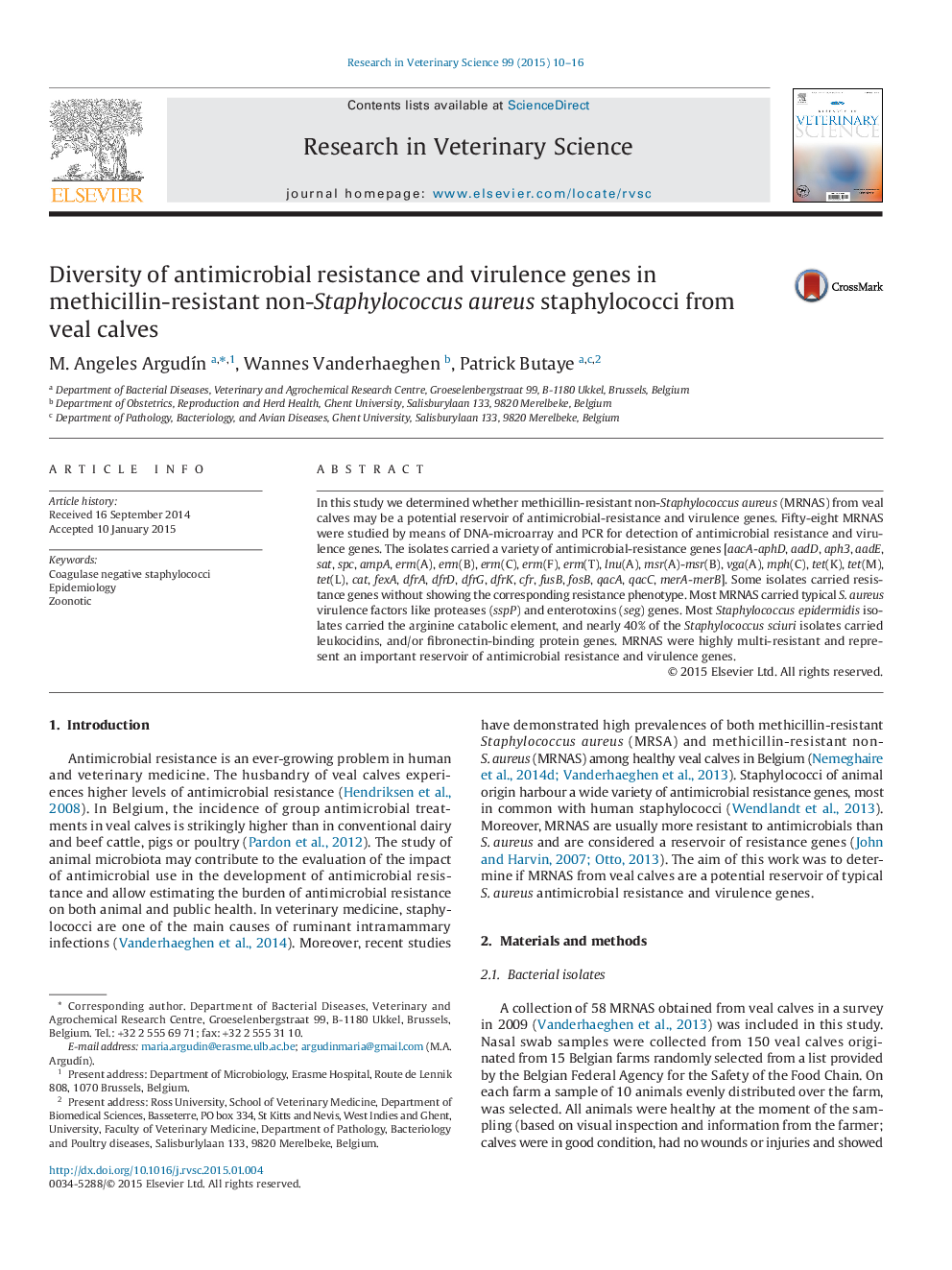| Article ID | Journal | Published Year | Pages | File Type |
|---|---|---|---|---|
| 2454852 | Research in Veterinary Science | 2015 | 7 Pages |
•Methicillin-resistant non-S. aureus staphylococci-MRNAS of veal calves were studied.•MRNAS were highly multi-resistant and carried a broad range of resistance-genes.•MRNAS carried typical Staphylococcus aureus virulence factors.•MRNAS may represent a reservoir of antimicrobial resistance and virulence genes.
In this study we determined whether methicillin-resistant non-Staphylococcus aureus (MRNAS) from veal calves may be a potential reservoir of antimicrobial-resistance and virulence genes. Fifty-eight MRNAS were studied by means of DNA-microarray and PCR for detection of antimicrobial resistance and virulence genes. The isolates carried a variety of antimicrobial-resistance genes [aacA-aphD, aadD, aph3, aadE, sat, spc, ampA, erm(A), erm(B), erm(C), erm(F), erm(T), lnu(A), msr(A)-msr(B), vga(A), mph(C), tet(K), tet(M), tet(L), cat, fexA, dfrA, dfrD, dfrG, dfrK, cfr, fusB, fosB, qacA, qacC, merA-merB]. Some isolates carried resistance genes without showing the corresponding resistance phenotype. Most MRNAS carried typical S. aureus virulence factors like proteases (sspP) and enterotoxins (seg) genes. Most Staphylococcus epidermidis isolates carried the arginine catabolic element, and nearly 40% of the Staphylococcus sciuri isolates carried leukocidins, and/or fibronectin-binding protein genes. MRNAS were highly multi-resistant and represent an important reservoir of antimicrobial resistance and virulence genes.
